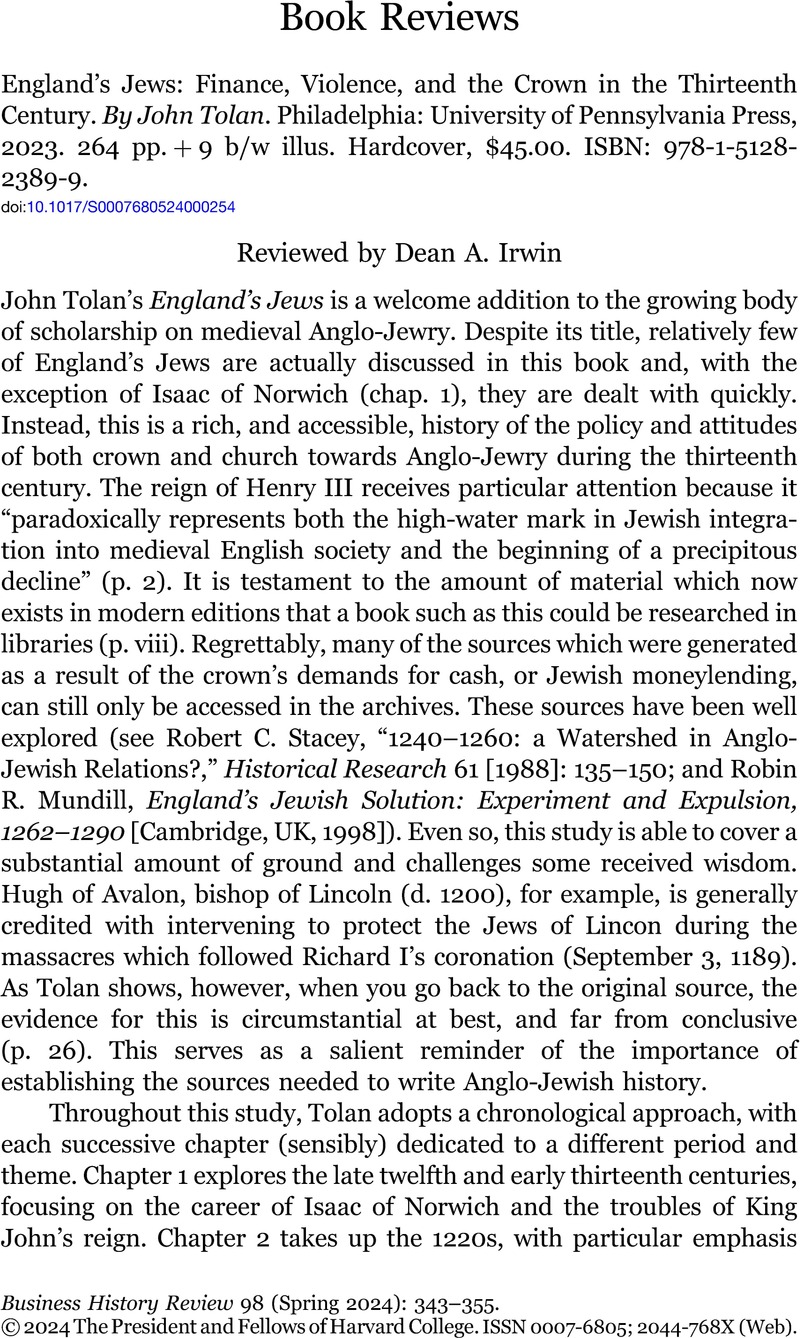No CrossRef data available.
Article contents
England’s Jews: Finance, Violence, and the Crown in the Thirteenth Century. By John Tolan. Philadelphia: University of Pennsylvania Press, 2023. 264 pp. + 9 b/w illus. Hardcover, $45.00. ISBN: 978-1-5128-2389-9.
Review products
England’s Jews: Finance, Violence, and the Crown in the Thirteenth Century. By John Tolan. Philadelphia: University of Pennsylvania Press, 2023. 264 pp. + 9 b/w illus. Hardcover, $45.00. ISBN: 978-1-5128-2389-9.
Published online by Cambridge University Press: 05 August 2024
Abstract
An abstract is not available for this content so a preview has been provided. Please use the Get access link above for information on how to access this content.

Information
- Type
- Book Review
- Information
- Copyright
- © 2024 The President and Fellows of Harvard College

